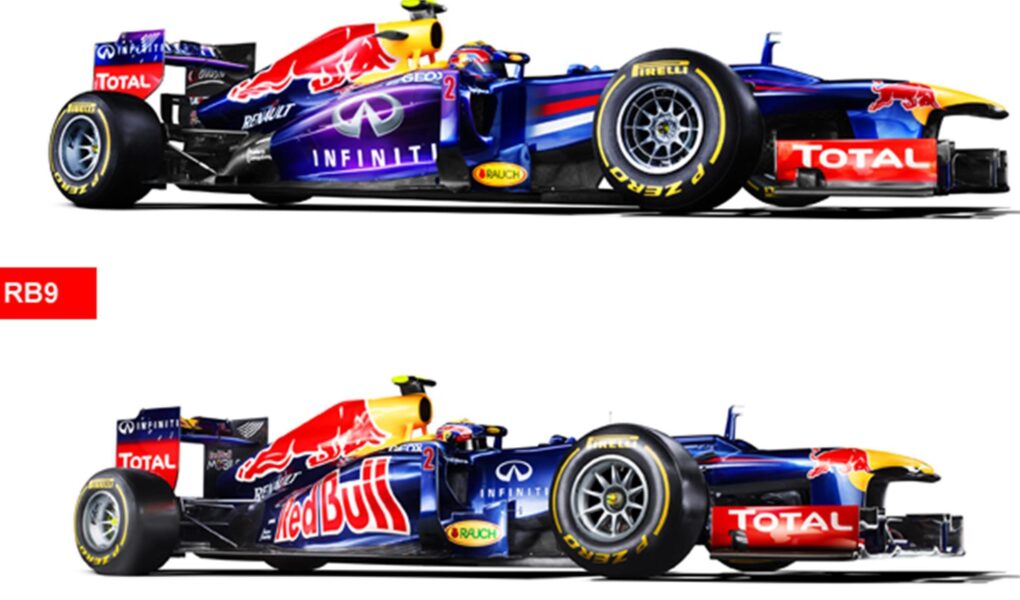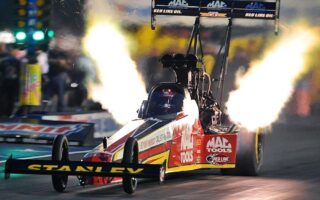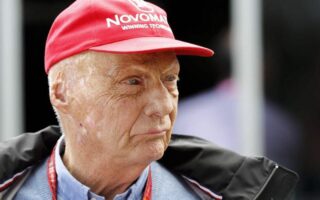In the fast-paced world of Formula 1, where innovation meets precision, few machines have achieved the legendary status of the Red Bull RB9. This remarkable vehicle, which competed in the 2013 Formula One season, symbolizes the pinnacle of engineering prowess and competitive spirit. Designed by the brilliant minds at Red Bull Racing under the guidance of Technical Director Adrian Newey, the RB9 was not only a testament to cutting-edge technology but also a fusion of speed, agility, and aerodynamic excellence. As we delve into the intricacies of the RB9—exploring its design, performance, and impact on the sport—we gain a deeper appreciation for the relentless pursuit of greatness that defines both the team and the sport itself. Join us as we revisit the legacy of the RB9 and uncover what made it a standout contender in the pantheon of Formula 1 history.
Table of Contents
- Exploring the Engineering Marvels of the Red Bull RB9
- Unraveling the Performance Secrets Behind the Championship Winner
- Tuning the RB9: Enhancements and Adjustments for Optimal Efficiency
- A Legacy in Motion: Lessons from the RB9 for Future Formula One Designs
- Q&A
- Concluding Remarks
Exploring the Engineering Marvels of the Red Bull RB9
The Red Bull RB9, a contemporary masterpiece in Formula 1 engineering, showcased remarkable innovation and performance during its racing seasons. It blended aerodynamic efficiency with powerful engineering, enabling exceptional speed and handling on the track. Among its standout features were:
- Advanced Aerodynamics: The car’s design focused on optimizing airflow to reduce drag and improve downforce.
- Innovative Suspension Systems: A sophisticated setup allowed for better tire contact with the track, enhancing grip and cornering abilities.
- Power Unit Integration: The seamless integration of its Renault engine maximized performance and reliability.
Moreover, the RB9 was celebrated for its intelligent weight distribution, which played a critical role in balancing performance across various circuits. Its construction utilized lightweight materials, ensuring speed without compromising strength. A glimpse at some of its engineering specifications reveals just how meticulous the design process was:
| Specification | Details |
|---|---|
| Chassis: | RB9 Carbon Fiber Monocoque |
| Engine: | Renault 2.4 L V8 |
| Weight: | 642 kg |
| Launch Year: | 2013 |
Unraveling the Performance Secrets Behind the Championship Winner
The Red Bull RB9, a masterpiece of engineering, showcased a remarkable fusion of aerodynamics and power that propelled it to championship glory. At the core of its performance was the impeccable RB9 chassis, designed to optimize airflow and reduce drag, which allowed the car to take corners with unprecedented speed. This innovative approach incorporated features such as:
- Low-drag rear wing for enhanced stability at high speeds
- Active suspension systems enabling precise handling
- Lightweight materials to improve overall agility
Moreover, the harmony between the RB9’s renowned Renault engine and its aerodynamics resulted in superior power delivery and efficiency. The power unit, tuned for peak performance, emphasized both speed and reliability. Key factors contributing to this synergy included:
- Turbocharged V8 engine for robust performance
- Energy Recovery System (ERS) to enhance acceleration
- Strategic weight distribution for optimal balance and control
| Feature | Benefit |
|---|---|
| Aerodynamic Design | Improved downforce and cornering speed |
| Hybrid Power System | Increased efficiency and responsiveness |
Tuning the RB9: Enhancements and Adjustments for Optimal Efficiency
The RB9, a pinnacle of engineering, requires careful adjustments to maximize its performance on the racing circuit. Tuning involves meticulous calibration of both the aerodynamics and mechanical systems. Key enhancements can include:
- Suspension Setup: Fine-tuning the suspension geometry to improve grip and handling through corners.
- Weight Distribution: Optimizing the placement of components to achieve an ideal balance and enhance cornering efficiency.
- Engine Mapping: Customizing the fuel and ignition timing for better throttle response and increased power output.
Another crucial factor is the optimization of the car’s aerodynamics, which directly impacts drag and downforce. This can be achieved by adjusting the front and rear wing settings, combined with strategic modifications to bodywork. Consider the following adjustments in detail:
| Component | Adjustment Type | Impact |
|---|---|---|
| Front Wing | Angle Adjustment | Increased Downforce |
| Rear Wing | Height Modification | Enhanced Stability |
| Diffuser | Expanding Surface Area | Improved Ground Effect |
A Legacy in Motion: Lessons from the RB9 for Future Formula One Designs
The Red Bull RB9 represents a pinnacle of innovation in Formula One engineering, showcasing a blend of performance, reliability, and cutting-edge technology. This car redefined the boundaries of aerodynamic design, incorporating several key features that future designs can emulate:
- Advanced Aerodynamics: The RB9’s unique wing configurations allowed for optimal downforce with minimal drag, setting a benchmark for future teams to strive for.
- Efficient Energy Recovery: Utilizing a sophisticated Energy Recovery System (ERS), the RB9 maximized power output while maintaining fuel efficiency, paving the way for hybrid technologies.
- Weight Distribution: A meticulously engineered balance in weight distribution provided unparalleled handling characteristics, crucial for navigating complex circuits.
Further emphasizing its revolutionary impact, the RB9 stood out not only for its mechanical prowess but also for its strategic implementation of data analytics and real-time telemetry. The car’s ability to adapt dynamically during races was remarkable:
| Feature | Impact on Performance |
|---|---|
| Real-time Data Processing | Enabled quick decision-making and optimal race strategy adjustments. |
| Customizable Settings | Allowed drivers to fine-tune car behavior to suit track conditions instantly. |
As we look forward to the next generation of Formula One cars, the lessons from the RB9 remind us that combining advanced technology with smart design is vital for success on the global stage.
Q&A
Q&A: The Red Bull RB9 – A F1 Icon in Its Own Right
Q1: What was the significance of the Red Bull RB9 in the Formula 1 timeline?
A1: The Red Bull RB9 represents a pivotal moment in Formula 1 history, as it was the car that secured the constructors’ championship for Red Bull Racing in 2013. Not only did it continue the legacy of its predecessors, but it also showcased the team’s engineering prowess, helping Sebastian Vettel clinch his fourth consecutive drivers’ title.
Q2: What were the standout features of the RB9 that contributed to its success?
A2: The RB9 boasted a sophisticated aerodynamic design with a notable emphasis on downforce, which allowed it to maintain grip through corners. Coupled with a Renault engine that delivered exceptional power and reliability, the RB9’s balanced chassis and innovative front and rear suspension system made it a formidable competitor on the track.
Q3: How did the RB9 compare to its rivals during the 2013 season?
A3: Throughout the 2013 season, the RB9 consistently outperformed its rivals, such as the Ferrari F138 and Mercedes F1 W04. Its superior aerodynamics and tire management allowed Vettel to execute strategic race plans while also showcasing unmatched speed in qualifying sessions, giving Red Bull a substantial edge.
Q4: Who were the key figures behind the development of the RB9?
A4: The success of the RB9 can be attributed to a collaborative effort from a skilled team of engineers and designers at Red Bull Racing. Notable figures include Chief Technical Officer Adrian Newey, known for his visionary designs, and star driver Sebastian Vettel, whose driving prowess maximized the car’s performance on the circuit.
Q5: What are some memorable races or moments associated with the RB9?
A5: The RB9 produced several memorable moments during the 2013 season, including Vettel’s remarkable triumph at the Malaysian Grand Prix, where he famously defied team orders to secure victory. The car also made headlines with Vettel’s record-breaking nine consecutive wins, showcasing its dominance throughout the season.
Q6: What has been the legacy of the RB9 in the context of Formula 1?
A6: The legacy of the RB9 extends beyond its championship-winning performance. It has set a benchmark for design innovation in F1, influencing future car developments across teams. The combination of its engineering excellence and driver skill provided a captivating narrative that fans still celebrate, solidifying the RB9’s place in the annals of racing history.
Q7: How does the RB9 fit into the broader narrative of Red Bull Racing’s evolution?
A7: The RB9 is a crucial chapter in Red Bull Racing’s journey from newcomers to dominant force in Formula 1. Its success reinforced the team’s commitment to innovation, discipline, and partnerships with cutting-edge engineers and suppliers. The RB9 serves as a symbol of what is possible when creativity meets determination in motorsport.
Q8: How has the discussion surrounding the RB9 evolved since its racing days?
A8: Since its competitive days, discussions around the RB9 have often focused on its technological breakthroughs and the impact it had on the sport. Analysts and fans delve into how its design philosophies influenced subsequent F1 cars and the nostalgia it evokes for a golden era of racing dominance, encapsulating an unforgettable chapter in Formula 1 history.
Concluding Remarks
As we reflect on the legacy of the Red Bull RB9, it becomes clear that this remarkable machine was far more than just a race car; it was a symbol of innovation and relentless pursuit of excellence in the world of Formula 1. With its striking design, unparalleled engineering, and the unwavering spirit of the team behind it, the RB9 not only dominated the track during the 2013 season but also set a benchmark for future generations of racing vehicles.
This model reminded us of the beauty of teamwork, as each element, from aerodynamics to tire performance, worked harmoniously to achieve greatness. As we conclude our journey through its storied history, we can appreciate the RB9 not just for its victories, but for the inspiration it provided to engineers, drivers, and motorsport enthusiasts worldwide. In the fast-paced world of Formula 1, the RB9 remains an enduring testament to creativity and precision in engineering, ensuring that its impact will be felt long after the last race flag is waved.



